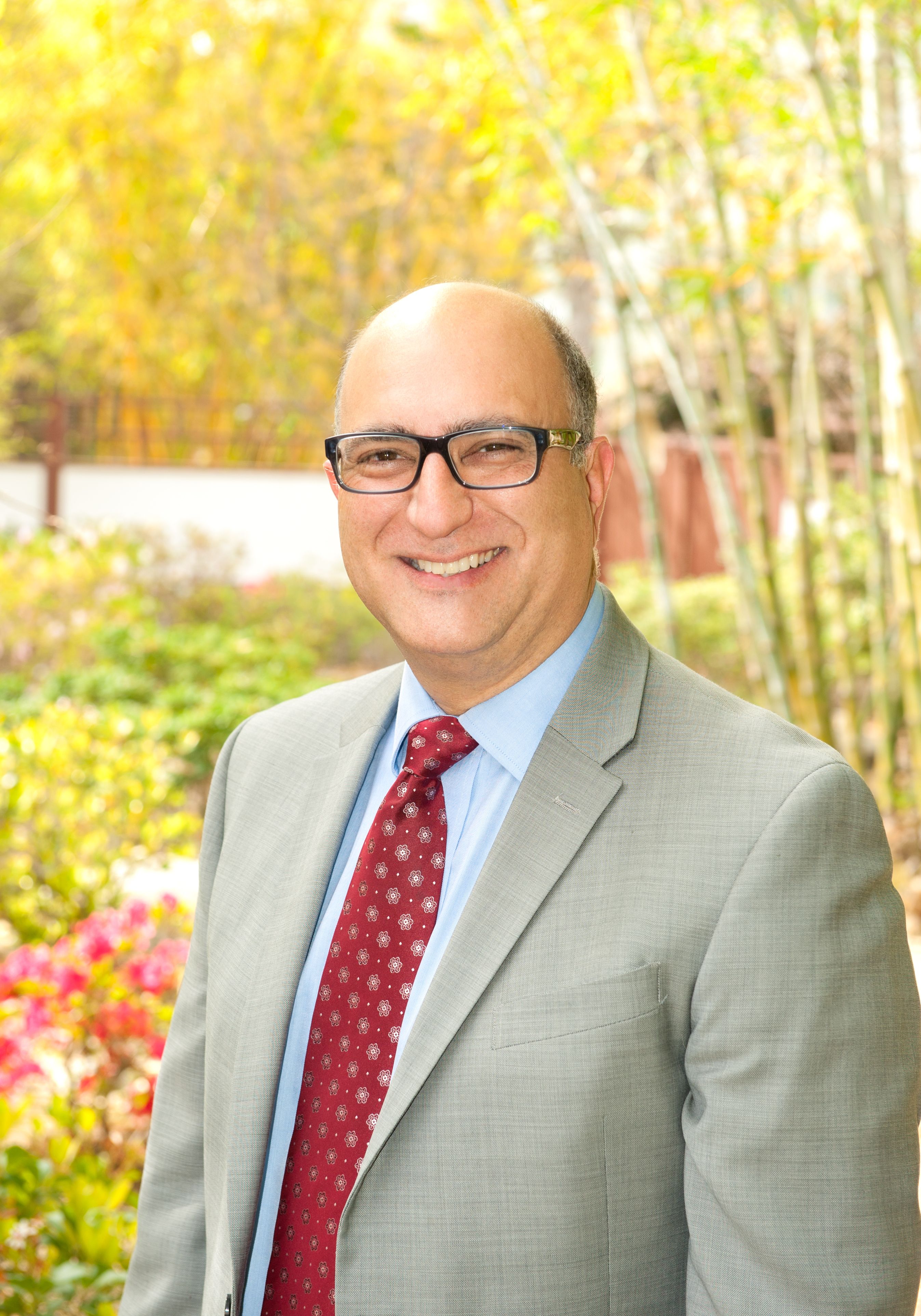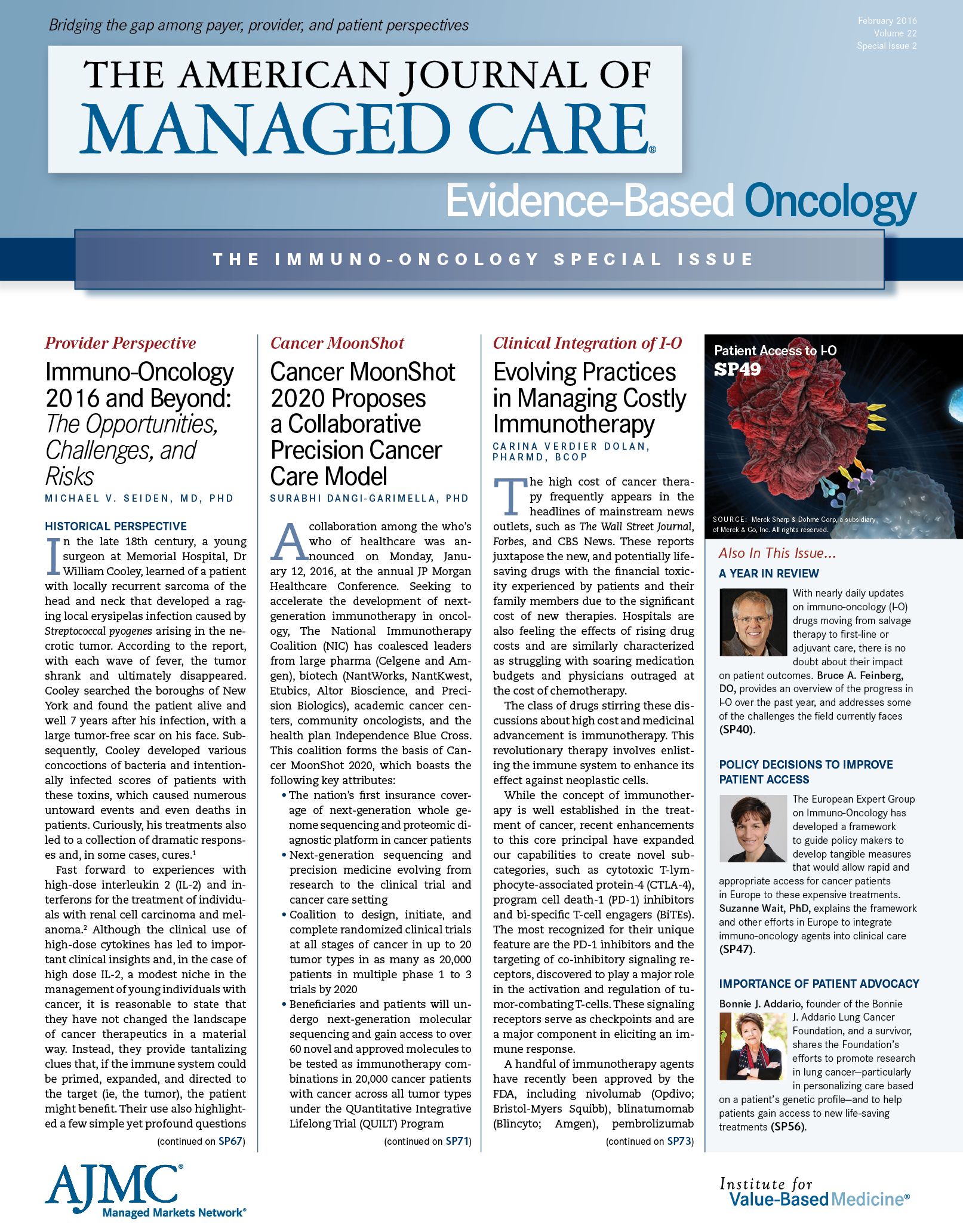- Center on Health Equity & Access
- Clinical
- Health Care Cost
- Health Care Delivery
- Insurance
- Policy
- Technology
- Value-Based Care
Shaping the Future of Immuno-Oncology
While the number and diversity of immunologically-based anticancer agents have increased dramatically, a number of challenging questions persist: sequencing with existing regimens, selection of best responders, cost, and patient access.

For decades, cancer treatment largely consisted of using varying combinations of surgery, radiation therapy, and chemotherapy. Throughout this period, research focused on using each of these therapeutic modalities in increasingly aggressive ways in an attempt to cure more patients. Unfortunately, the use of increasingly intensive chemotherapeutic regimens and aggressive surgical procedures failed to provide proportionate improvements in patient outcomes or overcome the enhanced toxicity and costs of these approaches.1
As early as the 1970s, however, investigators began to postulate that the immune system might be able to provide a fourth therapeutic avenue for improving cancer care outcomes. Based upon the early experience with interferon, in 1980, a Time magazine cover story heralded a new era of “magic bullets” for treating cancer.2 Whereas the initial public enthusiasm for interferon quickly waned in the face of marginal cancer response rates and significant treatment-related toxicities, the belief persisted that immunologically-based therapeutics could significantly impact cancer. This belief was reinforced by data showing that immuno-stimulatory cytokines, like interleukin-2, could produce significant tumor responses in chemotherapy-refractory diseases (like renal cell carcinoma and metastatic melanoma) and that donor-derived T-cell infusions could produce significant disease responses in patients who had relapsed following prior allogeneic hematopoietic cell transplant.3 The subsequent finding that 2 monoclonal antibody-based therapeutics could dramatically improve response rates and overall survival for patients with aggressive B-cell non-Hodgkin lymphoma (rituximab) and Her2-neu—expressing breast cancer (trastuzumab), respectively, firmly embedded immuno-oncological therapeutics within the anticancer armamentarium.4
Over the past 15 years, the number and diversity of immunologically-based anticancer agents have increased dramatically. Immuno-oncological therapeutics now include numerous monoclonal antibodies, monoclonal antibody—drug conjugates, bispecific antibody–like moieties, and gene-engineered cytotoxic T-cells. The armamentarium of these agents is growing rapidly. Patients affected by refractory-aggressive cancers, like acute lymphoblastic leukemia, now benefit from the availability of potent, highly-effective immunotherapeutic agents, with the promise of more to come.5,6 These novel therapeutics, however, have provoked a number of challenging questions: how do we best use them? How do we sequence them with existing treatment regimens? How do we more carefully select those patients who might benefit from treatment? How do we use these agents in an economically sustainable way? Moreover, how do we ensure equitable patient access to these game-changing therapeutics?
This issue of Evidence-Based Oncology looks carefully at the immuno-oncology (I-O) revolution and its attendant issues. Bruce Feinberg, DO, of Cardinal Health provides his perspective on advances in I-O and the evolution of immunologically-based therapeutics and their clinical use. Suzanne Wait, PhD, of The Health Policy Partnership Ltd, United Kingdom, provides a policy perspective on how to ensure equitable patient access to these therapeutics. Carina Dolan, PharmD, of Vizient Inc, shares the findings of a panel discussion on how these agents can be used in a patient-centered, economically-sustainable way.
EBO
In his recent State of the Union address, President Obama spoke of his commitment to pursuing a new “moon shot” for achieving a cure for cancer. Although rhetorically, the image of a “moon shot” may embolden us as a nation to invest more aggressively in pursing new technical avenues in the war on cancer, the growing availability of effective immunotherapeutic agents shows us that the solutions are much closer to home. I-O is the fruit of decades of investment in immunology and cancer research that has translated into meaningful improvements in many patients’ hopes for a cure for their cancer. Ensuring that we continue to develop these agents and make best practice—based use of existing agents is a far more prosaic, but essential, next step.
References
Joseph Alvarnas, MD, is associate clinical professor and director of Medical Quality and Quality, Risk, and Regulatory Management, City of Hope, Duarte, California. He is the editor in chief of Evidence-Based Oncology.
- Stadtmauer EA, O'Neill A, Goldstein LJ, et al. Conventional-dose chemotherapy compared with high-dose chemotherapy plus autologous hematopoietic stem cell transplantation for metastatic breast cancer. N Engl J Med. 2000;342(15):1069-1076.
- Faguet G. The Conquest of Cancer: A Distant Goal. Springer, New York; 2015:104.
- Maio M. Melanoma as a model tumor for immune-oncology. Annal Oncol. 2012;23 (suppl 8):viii10-14. doi: 10.1093/annonc/mds257.
- Gatto B. Monoclonal antibodies in cancer therapy. Curr Med Chem Anticancer Agents. 2004;4(5):411-414.
- Chen DS, Mellman I. Oncology meets immunology: the cancer immunity cycle. Immunity. 2013;39(1):1-10. doi: 10.1016/j.immuni.2013.07.012.
- Inacio P. Cancer, immunity, and immunotherapy research reviewed in special issue. Immuno-Oncology News website. http://immuno-oncologynews.com/2015/04/20/cancer-immunity-and-immunotherapy-research-reviewed-in-special-issue/. Published April 20, 2015. Accessed January 28, 2016.


